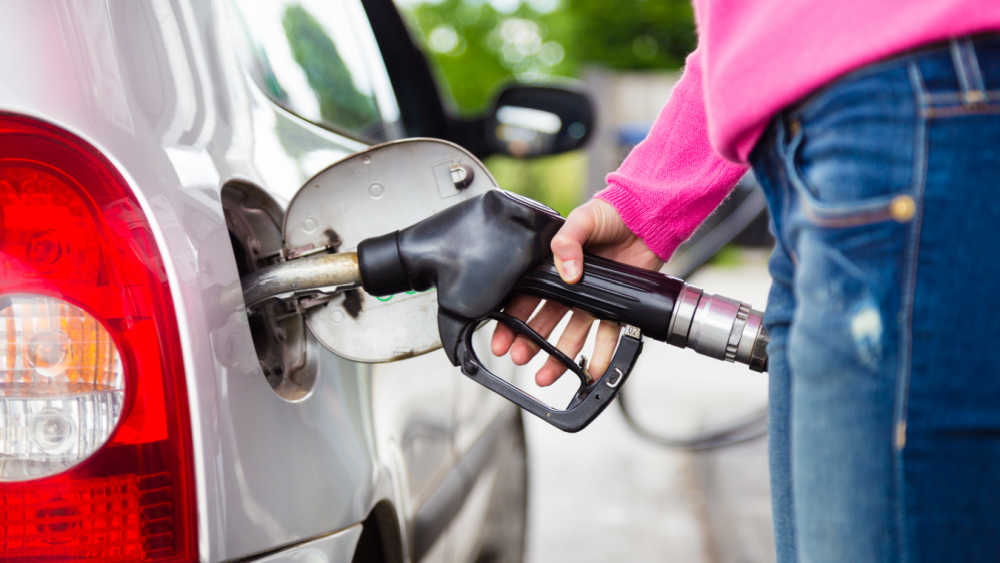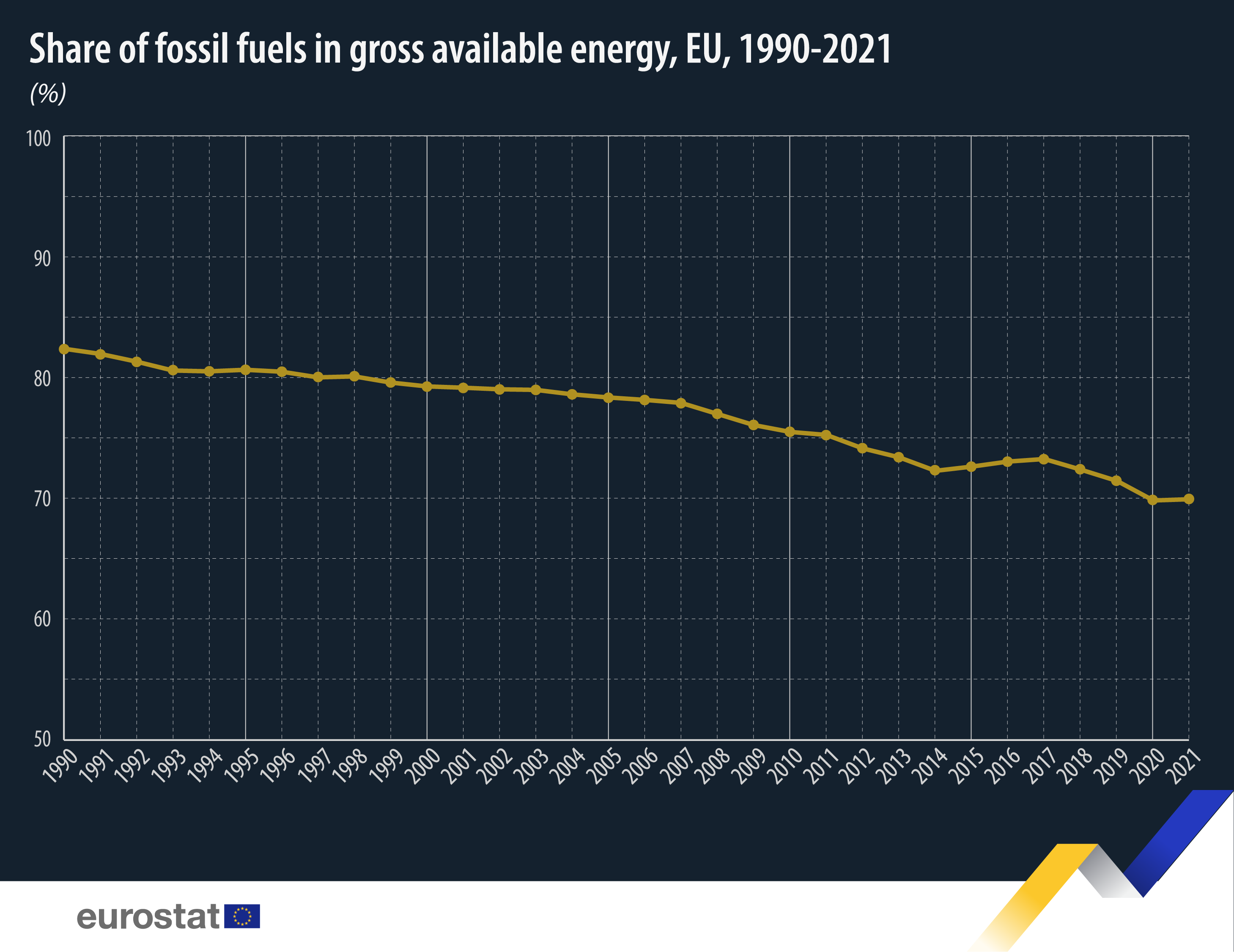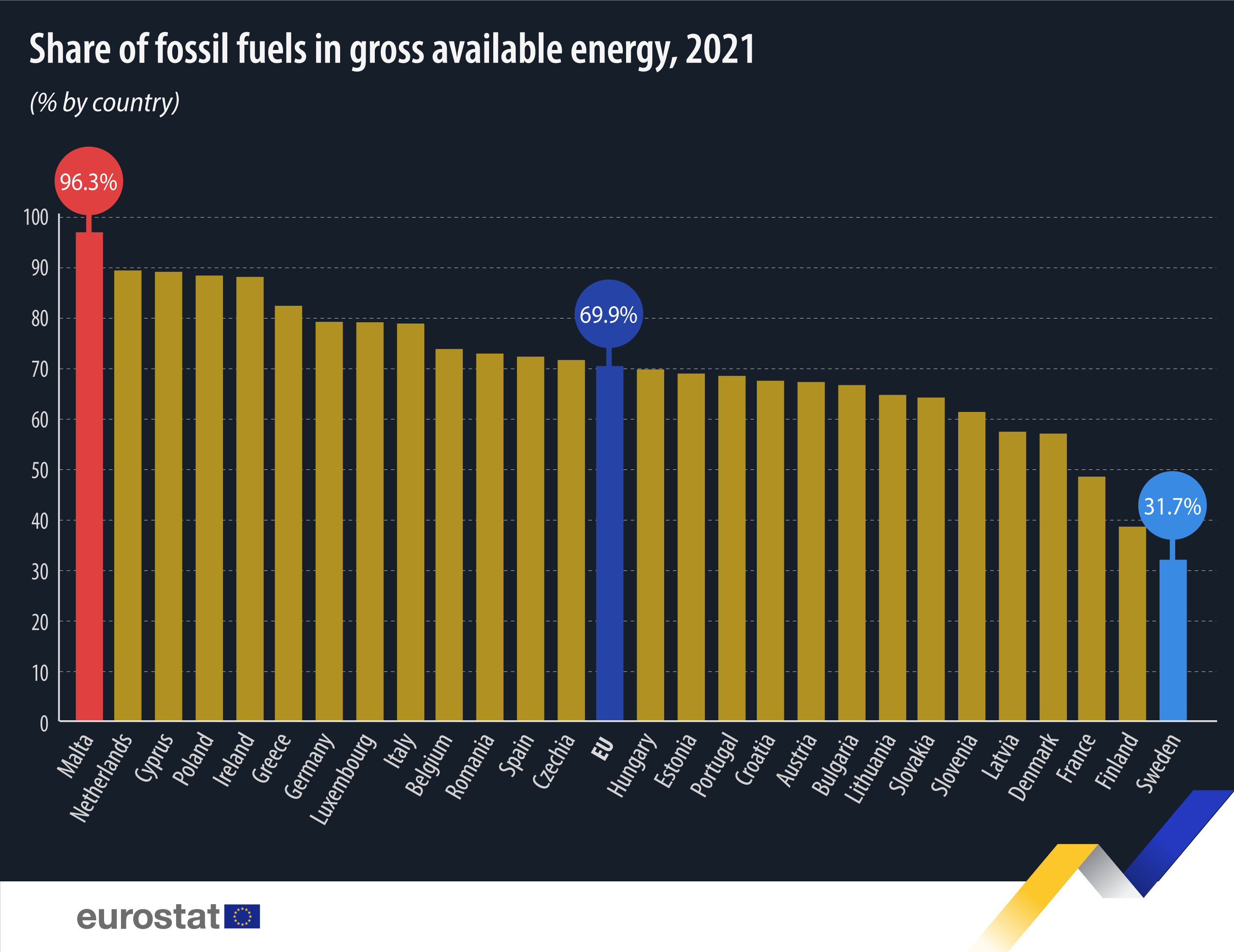Fossil fuels stabilised at 70% of energy use in 2021

The EU continues to largely rely on fossil fuels for its overall energy supply, as illustrated by the ratio of fossil fuels in gross available energy (the total energy demand of a country or region). In 2021, fossil fuels made up 70% of gross available energy in the EU, remaining at the same level as in 2020. This percentage had decreased significantly over the last decades. Since 1990, the first year for which data are available, it dropped by 13 percentage points (pp), mostly due to the increase in renewable energy.
Source dataset: nrg_ind_ffgae
In 2021, Malta (96%) remained the EU country with the highest share of fossil fuels in gross available energy followed by Cyprus and the Netherlands (89%), Ireland and Poland (88%). Most of the other EU countries had shares between 50% and 85%. Only Sweden (32%), Finland (38%) and France (48%) had shares below 50%.
Compared with 2020, in 2021, the largest, yet rather small, decreases in the share of fossil fuels in gross available energy were in Finland (-3 pp), Belgium (-3 pp), Lithuania (-3 pp), Portugal (-2 pp) and Denmark (-2 pp). The largest increases were in Bulgaria (+4 pp), Estonia (+3 pp), Poland and Slovakia (both +2 pp) and Spain (+1 pp).
Source dataset: nrg_ind_ffgae
Denmark: top performer in diminishing share of fossil fuels between 2010-2021
Over the past decade, all the EU members registered a decrease in their share of fossil fuels in gross available energy. The largest decrease was measured in Denmark (from 81% to 57%; -25 pp), followed by Estonia (from 91% in 2010 to 69% in 2021; -22 pp) and Finland (from 57% to 38%; -19 pp).
Other significant decreases were recorded in Latvia (from 69% to 57%; -12 pp), Luxembourg (from 90% to 79%; -11 pp) and Lithuania (from 75% to 64%; -10 pp).
On the other hand, the smallest decreases were measured in Germany (from 81% to 79%; -2 pp), followed by Romania (from 75% to 72%; -3 pp), Malta (from 100% to 96%; slightly over -3 pp), Hungary (from 73% to 69%; -4 pp) and France (from 52% to 48%; -4 pp).
Eurostat has recently released annual energy statistics for 2021. Visit the Eurostat database for new data on commodity balances, energy balances, and energy indicators, and turn on your alerts for the updated Statistics Explained articles coming out in the next 3 months. If you want to know more about the energy sector in the EU in an interactive and customizable way, you can also visit the energy visualisations page for a wide range of interactive tools, for example energy flow charts and energy trade.
For more information
Methodological notes:
- Gross available energy means the overall supply of energy on the territory of the country. This includes energy transformation (including generating electricity from combustible fuels), distribution losses and use of fossil fuel products for non-energy purposes (e.g. in the chemical industry). It also includes fossil fuel used for transport, including fuel purchased within the country that is used elsewhere (e.g. international aviation, international maritime bunkers and, in the case of road transport “fuel tourism”).
- Methodology for energy balances (calculation of gross available energy)
If you have any queries, please visit our contact us page.


